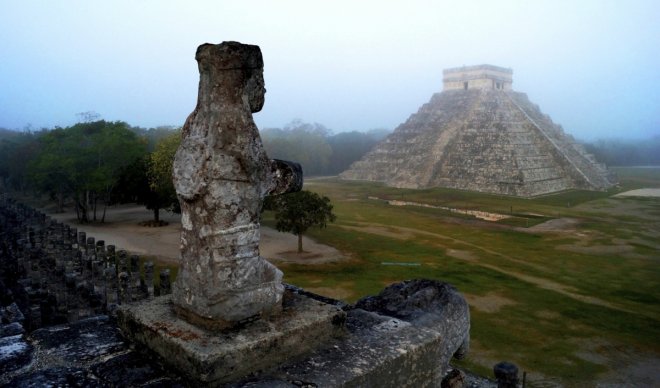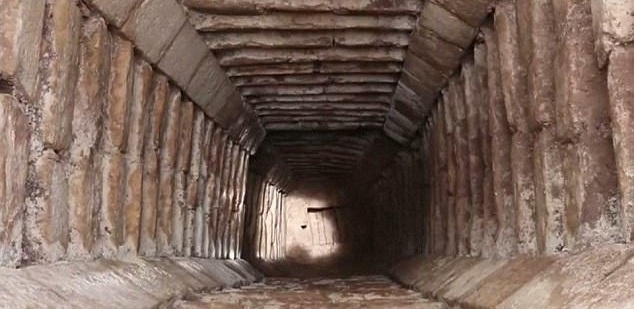
An ancient Mayan pyramid that bewitched explorers since its discovery in the 1500s by Spanish conquerors, is still continuing to open up to the world, with each passing day, revealing the hidden mysteries.
At the Temple of Kukulkan situated in Mexico's Chichen Itza, a secret passageway has been discovered recently that is believed to lead to an underground water-filled cave or cenote.
On hearing the term 'cenote' what first strikes us are isolated pits where Mayans used to sacrifice people. The existence of these sinkholes is confirmed as previous expeditions did find human remains in them.
Researchers believe that this secret passageway might lead them to the unknown kingdom of the Mayan civilization and might reveal the 'sacred geography'.
The discovery was made by researchers from the Great Mayan Aquifer Project, led by underwater archaeologist Guillermo de Anda. The discovery was made using advanced imaging technologies.
A ground-penetrating lidar was used to send electromagnetic signals through the walls and other elements of the pyramid and its surroundings, to get to know the structure of the temple's underground. The existence of the tunnel has been assured, however, researchers need to find the entrance to the passage and hope to explore it physically.

In order to enter the passage, one needs to pass through the smaller burial chamber which is known as the Ossuary. However, it is currently blocked.
"Through the Ossuary, we can enter the cave beneath the structure and there we found a blocked passageway, probably closed off by the ancient Mayans themselves," Guillermo de Anda, told El Universal.
"We will enter again and this time we will try to open it to see if the passageway leads us to the entrance of the cenote beneath the pyramid," he further stated.
An enormous sinkhole was discovered beneath the 1,000-year-old Temple in 2015.
It is feared that the river that runs through the cenote may lead to the collapse of the pyramid, once the roof gives away.
The sinkhole beneath the temple is 82 feet by 114 feet and is almost 65 feet deep. The top of the cenote on which the pyramid currently sits has 16 feet deep limestone layer.
The Temple of Kukulkan is believed to be 900-1100 years old, built on the rock cavern as a part of their religious ceremonies.

Legend has it that Kukulkan is a Mayan snake deity or a feathered serpent who grew in the cave before emerging as an earthquake.
Researchers believe that the cenote might be connected to other sinkholes surrounding the pyramid to the north, west and east, by underground rivers. They claim that the cenotes surrounding the pyramid might represent the four points of the compass. The river at the center might represent the center of the Mayan universe, which they previously believed to be a tree with roots travelling underground.
The civilization itself seems like it is wrapped up in mystery. In 2016, a second structure within the famous pyramid was discovered.
A process called tri-dimensional electric resistivity tomography or ERT-3D was used to discover the new structure. It was non-invasive in nature and avoided causing damage to the pyramid.
Experts are aware of the existence of smaller pyramid structures underneath the temple but the new study detected the existence of even smaller structure inside the outer layers.









